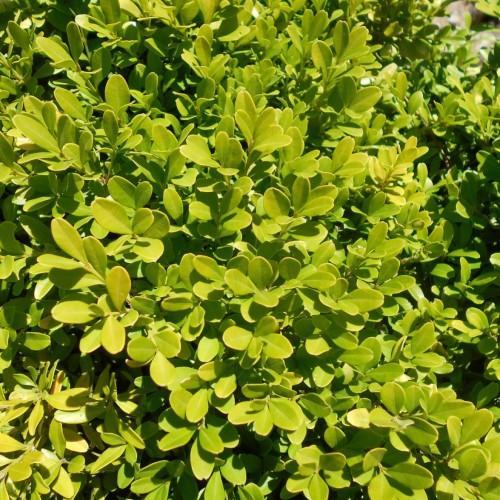
boxwood
Buxus microphylla 'Compacta'
Also Known As - Korean boxwoodCycle:
Perennial
Watering:
Average
Hardiness Zone:
6 - 9
Flowers:
Flowers In Spring
Sun:
Filtered shade, Full sun only if soil kept moist, Part sun/part shade
Soil:
Well-drained
Fruits:
Fruits In Summer Ready In Winter
Leaf:
Yes
Growth Rate:
High
Maintenance:
Moderate
Care Level:
Moderate
watering
Watering Boxwood plants need to be done on a regular basis to keep them healthy and growing. Most Boxwood plants require about 1-2 inches of water per week during the growing season, either from rainfall or by providing supplemental irrigation. It is important to not over water the plant – allowing the soil to dry slightly between watering is recommended. During the wintertime, the water needs for Boxwood plants are minimal, but if there is a long dry period, it is helpful to occasionally give the plants a thorough watering.
sunlight
Boxwood (Buxus microphylla 'Compacta') grows best in bright, indirect sunlight. It should receive several hours of direct sunlight a day, but not too long, especially in the afternoon hours when the sun is the strongest. For best results, it should get at least 3 to 4 hours of direct morning sunlight each day, with the option of dappled or indirect light for the rest of the day to prevent sunburn. If it's grown indoors, it should be placed in a location that receives plenty of sunlight throughout the day.
pruning
For Boxwood (Buxus microphylla 'Compacta'), pruning should take place twice a year; in early spring (March) and in late summer (August/September). Pruning should be done lightly and strategically, removing only a small portion of the growth. This will help maintain the desired size and shape of the shrub while avoiding damaging the plant's health. When pruning, keep in mind that removing more than 25% of growth should be avoided. Removing too much of the plant's growth will reduce the number of leaves it can photosynthesize with, which can ultimately reduce the health of the plant. Additionally, it's important to make sure the pruning shears are sharp to avoid tearing the branches of the plant, which can lead to infection and disease.
Season
Hardiness Map
FAQ
Is Boxwood a popular landscape plant?
Yes, Boxwood is a popular landscape plant, due to its versatility in design, hardiness in cold temperatures, attractive foliage and its ability to be pruned into a variety of shapes. It makes an attractive year-round hedge, foundation plant or edging and, if left unpruned, can be grown as a small tree or shrub. Boxwoods can be planted either in the sun or partial shade and are a great addition to gardens of any size.
Are Boxwoods evergreen?
Yes, boxwoods are evergreen. They have deep green foliage and remain an attractive evergreen tree year-round, allowing for a versatile way to add color and structure to outdoor spaces. Boxwoods are also extremely easy to grow, making them a great choice for novice gardeners. Additionally, boxwoods are relatively low maintenance and can handle some light pruning if needed.
Can Boxwoods be trimmed into shapes?
Yes, boxwoods can be trimmed into shapes. With regular maintenance and occasional pruning, they can be cut and shaped into hedges, topiary, round forms and other creative patterns. Pruning them regularly also ensures that they remain healthy and look their best. It is important to trim them with the right tools and techniques in order to keep them healthy, while also achieving the desired shape.
Could Boxwoods be used as a hedge plant?
Yes, boxwoods can be used as a hedge plant. They are low-maintenance, evergreen shrubs that can be trimmed to create uniform hedges or shaped into topiary. Boxwoods are also resistant to disease and can tolerate both full sun and partial shade. They are ideal for small to medium hedges and make an attractive backdrop for annual and perennial flowers.
Should Boxwoods be planted in full sun or shade?
It depends on the variety of boxwood you have. Some varieties, such as English boxwood, are best planted in full sun for optimal growth and form. However, other varieties such as American and Korean boxwood do better in partial shade due to the more intense heat of full sun. In areas with long, hot summers and mild winters, provide some shade protection to prevent over-heating and drying out, especially during the hottest times of day.
